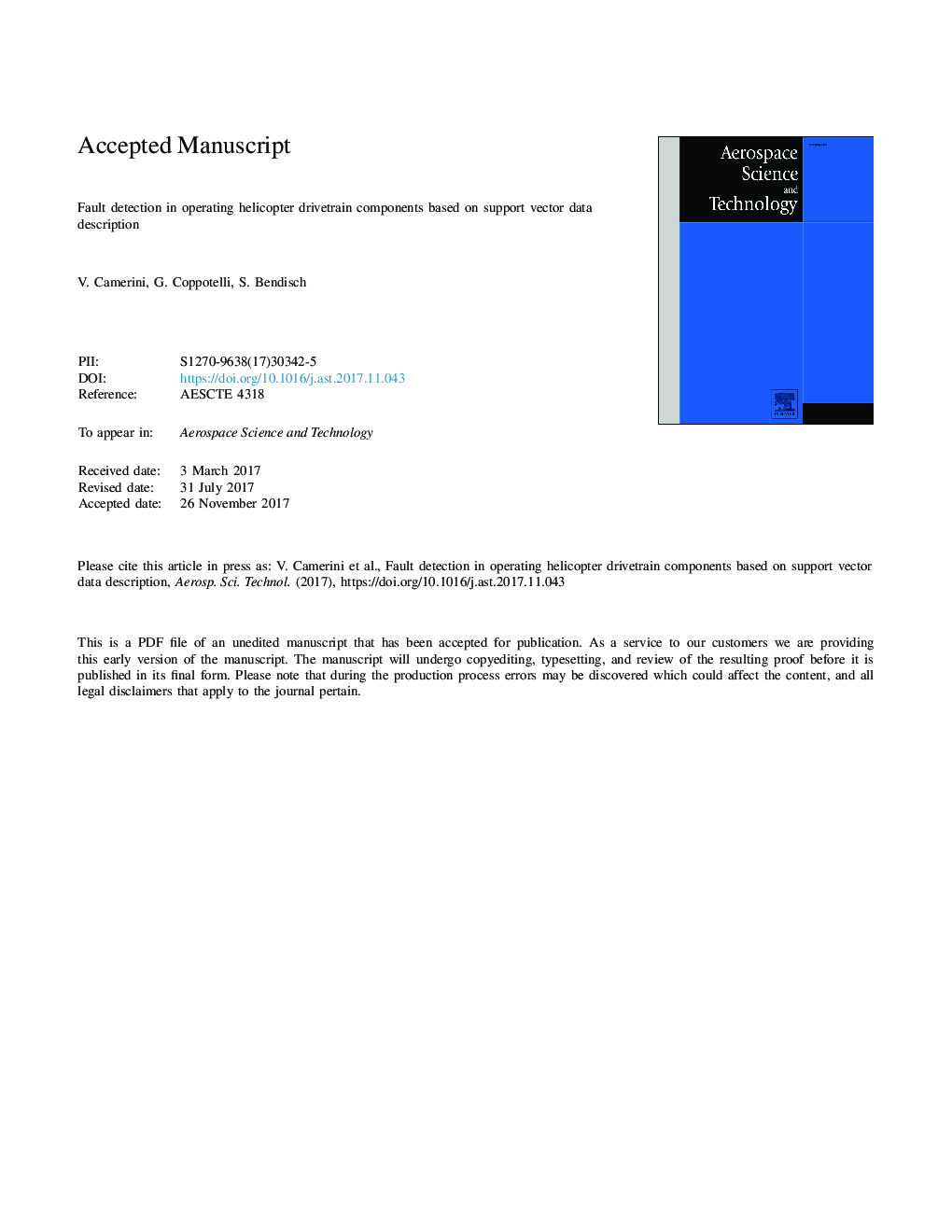| Article ID | Journal | Published Year | Pages | File Type |
|---|---|---|---|---|
| 8058080 | Aerospace Science and Technology | 2018 | 19 Pages |
Abstract
The objective of the paper is to develop a vibration-based automated procedure dealing with early detection of mechanical degradation of helicopter drive train components using Health and Usage Monitoring Systems (HUMS) data. An anomaly-detection method devoted to the quantification of the degree of deviation of the mechanical state of a component from its nominal condition is developed. This method is based on an Anomaly Score (AS) formed by a combination of a set of statistical features correlated with specific damages, also known as Condition Indicators (CI), thus the operational variability is implicitly included in the model through the CI correlation. The problem of fault detection is then recast as a one-class classification problem in the space spanned by a set of CI, with the aim of a global differentiation between normal and anomalous observations, respectively related to healthy and supposedly faulty components. In this paper, a procedure based on an efficient one-class classification method that does not require any assumption on the data distribution, is used. The core of such an approach is the Support Vector Data Description (SVDD), that allows an efficient data description without the need of a significant amount of statistical data. Several analyses have been carried out in order to validate the proposed procedure, using flight vibration data collected from a H135, formerly known as EC135, servicing helicopter, for which micro-pitting damage on a gear was detected by HUMS and assessed through visual inspection. The capability of the proposed approach of providing better trade-off between false alarm rates and missed detection rates with respect to individual CI and to the AS obtained assuming jointly-Gaussian-distributed CI has been also analysed.
Related Topics
Physical Sciences and Engineering
Engineering
Aerospace Engineering
Authors
V. Camerini, G. Coppotelli, S. Bendisch,
